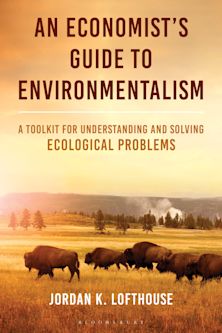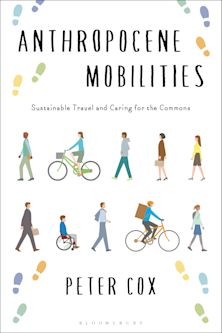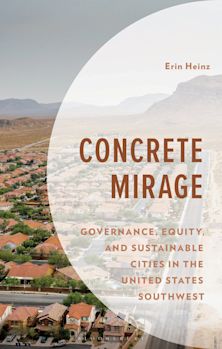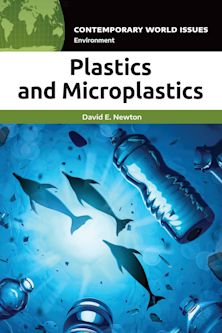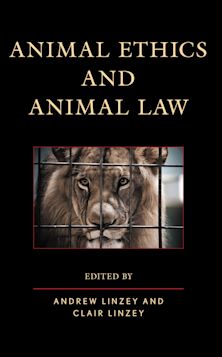Natural Resource Conflicts
From Blood Diamonds to Rainforest Destruction [2 volumes]
Natural Resource Conflicts
From Blood Diamonds to Rainforest Destruction [2 volumes]
Description
Natural resource and environmental conflicts have long been issues confronting human societies. This case-based examination of a wide range of natural resource disputes exposes readers to many contemporary examples that offer reasons for both hope and concern.
The Rwandan genocide, the Sudanese civil war, and perpetual instability in the Middle East and Africa: each of these crises have arguably been instigated and maintained by natural resource disputes. China has undertaken a Herculean task to plant hundreds of millions of trees along its margins in an effort to save Beijing from crippling dust storms and halt the expansion of the Gobi desert. Will it work, and is it worth it? These and many other cases of conflict stemming from natural resource or environmental concerns are explained and debated in this up-to-date examination of contemporary and ongoing topics.
The book examines conflicts over precious resources and minerals, such as diamonds, oil, water, and fisheries, as well as the pursuit of lesser-known minerals like Coltan and other "rare earth elements"—important resources in our technological age—in remote locations such as Greenland and the Congo. Each topic contains an overview and two position essays from different authors, thereby providing the reader with highly informative and balanced perspectives. Reference entries accompany each topic as well, helping students to better understand each issue. As the world hurtles into the 21st century, these natural resource issues are becoming increasingly important, with all global citizens having a significant stake in how these conflicts arise and play out.
Table of Contents
Introduction xxix
Volume 1 List of Entries by Region xxxix
Volume 1 List of Entries by Topic xliii
Part I. International Conflicts
1. Is the World's Increasing Population Stressing the Earth's Resources and Becoming a Major Source of Conflict? 3
Overview 3
M. Troy Burnett and Max Lu
The Earth's "Population Problem" Is Overstated and Wrong 6
Jeffery Gentry
Overpopulation Stresses Resources, Which in Turn Stresses People 10
Max Lu
2. How Have Natural Resource Conflicts Led to the Demise of Past Civilizations? 14
Overview 14
Mia Bennett
The Collapse of Easter Island—A Valuable Lesson for Our Modern World 17
M. Troy Burnett
Soil and the Collapse of the Mighty Roman Empire 20
Mark Hecht
3. As the World's Population Becomes More Urbanized, How Are Cities Being Designed to Avoid Conflicts? 24
Overview 24
Robin Morris Collin and Robert William Collin
Copenhagen, Bogotá, and Singapore: Three Inspiring Examples of Sustainable Cities 27
Roman Adrian Cybriwsky
Making Sustainable Cities—The Need to Focus on Transportation 32
Roman Adrian Cybriwsky
4. How Have Global Warming and Climate Change Promoted Conflict in Pastoral Communities? 35
Overview 35
Troy Sternberg
Mongolian Pastoralism, Climate Change, and Conflict 38
Ariell Ahearn and Troy Sternberg
Conflict in Syria—Pastoral Communities and Global Warming 40
Troy Sternberg
5. Will Air Quality Be a Source of Regional Conflict? 44
Overview 44
Mia Bennett
Conflicts and Air Pollution—The Future Is Here 47
Mia Bennett
Air Quality: Hardly Ever a Source of Regional Conflict 51
Bryan Comer
6. What Role Does Ecotourism Play in Natural Resource Conflicts? 56
Overview 56
Barbara McNicol
Ecotourism: Cooperation or Bust? 58
Edward Jackiewicz and Olga Govdyak
Successful Ecotourism: Inauthentic Tourism Experience versus Integrating Environmental Management and Conservation 63
Barbara McNicol
7. How Do Global Warming and Climate Change Influence a Nation's Security Policy? 67
Overview 67
Bruce E. Johansen
Climate Change: An Emerging Concern of National Security 70
M. Troy Burnett
War Is Environmentally Obsolete 73
Bruce E. Johansen
8. Is Nuclear the Right Option to Avoid Future Energy Conflicts? 76
Overview 76
Robert Goble and M. Troy Burnett
How to Avoid Future Energy Conflicts? Promote Nuclear! 79
Duane Bratt
Nuclear Energy Is a Conflict Multiplier 83
M. Troy Burnett
9. Could Conflicts over Water Actually Promote Peace and Stability? 88
Overview 88
J. C. Veilleux and M. Troy Burnett
Countries Do Not Go to War over Water 92
J. C. Veilleux
Transboundary Water Management—Some Success Stories 95
Mia Bennett
10. What Steps Should Be Taken to Help Provide Access to Clean Water for More People in the World? 99
Overview 99
Dennis Moran and M. Troy Burnett
Infrastructure First, Then Better Management 103
Nathan Eidem
Infrastructure Is Fine, But We Need to Focus on Regulation, Management, and International Cooperation 105
Coralie Noël
11. To Mitigate Conflicts over Water, Is It Better to Treat Water as a Commodity or a Human Right? 108
Overview 108
M. Troy Burnett and William Osei
Water Is, and Always Has Been, a Commodity 112
Mark Hecht
Water Should Be a Human Right! 115
John Agnew
12. Which Water Basins Are Presently Sites of the Highest Potential for Conflict? 119
Overview 119
Mia Bennett
From Aral Sea to Aral Desert 122
Mia Bennett
Moving People, Moving Earth: The Yangtze River and the Three Gorges Dam 125
Mia Bennett
13. Will the International Trade in Hazardous Waste Promote Stability or Conflict? 130
Overview 130
M. Troy Burnett
Controversy and Conflict with the Trade in Hazardous Waste 133
Tera Trujillo
International Trade of Hazardous Waste Causes Stability 136
Nicole Lomba
14. With Future Conflicts Seemingly Guaranteed, Is a Technological Breakthrough Needed to Avert the Climate Crisis? 139
Overview 139
M. Troy Burnett
Necessity Will Compel Technological Innovation 142
Bruce E. Johansen
How Can Society Respond to the Climate Crisis? By Changing Our Own Behavior 146
Benjamin K. Sovacool
15. To Mitigate Conflicts over Natural Resources, Is It Better to Promote Preservation or Conservation? 149
Overview 149
M. Troy Burnett
Preservation or Conservation, the Government Must Play the Key Role 152
Jacqueline Vaughn
Preservation First! 153
Peter Jacques
16. How Does the Illicit Trade in Endangered Species Promote Regional Conflict? 156
Overview 156
Ariana Tran and M. Troy Burnett
The Link between Illicit Trade in Endangered Species and Regional Conflict 159
Ariana Tran and M. Troy Burnett
The Need for Cooperation in the Illicit Wildlife Trade 162
Cynthia Tafoya and M. Troy Burnett
17. Should Cultural Exceptions Be Made in Whaling Laws? 165
Overview 165
Mia Bennett
No! A Dead Whale Is Still a Dead Whale 168
M. Troy Burnett
In Defense of Cultural Exceptions for Whaling 171
Mia Bennett
18. How Are Issues and Conflicts over Invasive Species Being Addressed? 176
Overview 176
Susan L. Woodward and Joyce A. Quinn
Invasive Species—A Complex Issue with No Simple Solutions 180
Joyce A. Quinn
Prevention, Eradication, and Education 187
Susan L. Woodward
19. How Does the Loss of Biodiversity Promote Conflict? 195
Overview 195
M. Troy Burnett
Biodiversity and Conflict: Issues and Resolutions 197
Jason Macleod
Conflict in Kenya—The Unintended Consequences of Biodiversity Conservation 200
M. Troy Burnett
20. Are Debt-for-Nature Swaps a Viable Means to Promote Stability in the Developing World? 204
Overview 204
M. Troy Burnett
A Critical View of Debt-for-Nature Swaps 207
Mia Bennett
Though Far from Ideal, Debt-for-Nature Swaps Provide One Creative Solution to the Debt-Habitat Destruction Problem 210
M. Troy Burnett
Part II. Africa
21. Was the Rwandan Genocide of 1994 a Result of Conflict over Natural Resources? 217
Overview 217
William von Lopik
The Rwandan Genocide: A Complex Confluence of Causal Factors 219
M. Troy Burnett
The Role of Environmental Factors in the Rwandan Genocide 222
William Van Lopik
22. What Role Have Natural Resources Played in the Sudanese Civil War? 225
Overview 225
M. Troy Burnett
Oil in the Sudan: A Conflict Multiplier, Not the Sole Cause 228
Meredith DeBoom
Conflict in Darfur—The Resource Perspective 231
M. Troy Burnett
23. Do Diamonds Have a Negative Influence on Development in Africa? 236
Overview 236
Laura Kerrigan and Jacob C. Brenner
Diamond Mining and Violence on the African Continent 239
Laura Kerrigan and Jacob C. Brenner
Diamond Mining: A Positive View 243
M. Troy Burnett
24. Will the Mining of Coltan in the Congo Further Destabilize the Region? 246
Overview 246
M. Troy Burnett
The Mining of Coltan in the DRC: The Same Sad Story of Exploitation and Conflict 249
Joseph Oppong and M. Troy Burnett
With Attention and Guidance Coltan Mining Can Benefit the DRC 252
Olga Govdyak and Edward Jackiewicz
25. How Will the Grand Ethiopian Renaissance Dam Affect Peace in the Region? 254
Overview 254
Jennifer C. Veilleux and M. Troy Burnett
The Contentious GERD: A Thorn in the Side of Nile Basin Politics 257
M. Troy Burnett
The Renaissance Dam—A Platform for Peace 261
Jennifer C. Veilleux
26. Does the Kimberley Process Work? 264
Overview 264
M. Troy Burnett
The Kimberley Process Is Broken 266
Meredith DeBoom
In Defense of the Kimberley Process 270
M. Troy Burnett
27. How Does China's Increasing Demand for Natural Resources Affect Stability in Africa? 273
Overview 273
Mia Bennett
China's Appetite for Resources Promotes Instability in Africa 276
Mia Bennett
The Chinese in Africa—Altruistic, No! But Benign and Potentially Stabilizing 279
M. Troy Burnett
28. How Have Large-Scale Conservation Efforts Promoted Conflict in Sub-Saharan Africa? 282
Overview 282
M. Troy Burnett and Gregory Maddox
Conservation Development Has Destabilized Africa 285
Gregory Maddux
The Promise and the Potential of Conservation in Africa 288
Gregory Maddux
Part III. Asia and the Pacific
29. Can It Be Argued That the Wealth Generated from Oil Is a Primary Cause of the Disempowerment of Women in the Middle East? 295
Overview 295
M. Troy Burnett
Oil, Religion, Islamic Kinship, and the Disempowerment of Middle Eastern Women 297
Kirsten Von Meter
Oil Wealth Expands Opportunities for Women in the Middle East 299
Natalie Koch
30. Is the Jordan River a Source of Regional Conflict or Stability? 303
Overview 303
M. Troy Burnett
The Jordan River: A Source of Conflict 305
Amy Hackney Blackwell
The Jordan River as a Nexus for Peaceful Cooperation 308
Chris Hrynkow
31. What Impact Does Control of Valuable Resources Have on Politics in the Middle East? 312
Overview 312
Larry Simpson and M. Troy Burnett
It's Not Just about Religion, But Economics as Well 315
Spencer Tucker
Oil and Water—The Resource Disputes That Contribute to Conflicts in the Middle East 318
Larry Simpson
32. Is China's Green Great Wall an Adequate Solution to Desertification? 321
Overview 321
Bruce E. Johansen
The Great Green Wall and Its Many Cracks 324
Bruce E. Johansen
The Great Green Wall—A Herculean Effort 326
M. Troy Burnett
33. What Conflicts Have Arisen as a Result of China's Building of the Three Gorges Dam? 331
Overview 331
Allen Raichelle
The Environmental Conflict over the Three Gorges 334
Elizabeth J. Leppman
Though Controversial and the Source of External and Internal Conflicts, Building the Dam Was Necessary! 337
Charles Fuller
34. How Can Conflicts Be Avoided with Japan's Fishing Industry? 341
Overview 341
Tracy Dobson and M. Troy Burnett
Thinking Outside the Sea: How to Reduce Conflict with Japanese Seafood 343
Lynn Galvin
Better Management Is Needed to Sustain Japanese Fisheries 346
Riley Walters
35. Is the Crisis in Australia's Murray-Darling Basin the Result of Climate Change or the Decisions and Actions of Humans? 348
Overview 348
Bruce E. Johansen
Australia's Drought and Changing Atmospheric Circulation Patterns 351
Bruce E. Johansen
Human Actions are the Root of the Crisis in the Murray-Darling Basin 353
Mia Bennett
36. Is Sustainable Development and Conservation or Further Resource Exploitation and Conflict the Future in Borneo? 357
Overview 357
M. Troy Burnett
Tensions Mount as Destruction of Borneo Continues 359
Bruce E. Johansen
Development, Stability, and Conservation Are Possible in Borneo 361
Donald Rallis
37. Was the Conflict in East Timor, Indonesia, the Direct Result of Natural Resources? 364
Overview 364
M. Troy Burnett
East Timor: A Conflict Rooted in Natural Resources 366
Micah Fisher
Nationalism, Geopolitics, and the Bleeding of East Timor 369
Keith Bettinger
38. Is the Resource of the Mekong River Basin a Potential for Regional Conflict? 374
Overview 374
Jennifer C. Veilleux
The Potential for Conflict in the Mekong River Basin 377
Aaron Williams and M. Troy Burnett
Cooperation and Coordination in the Mekong River Basin 380
Jennifer C. Veilleux
39. Will the Ganges River Be a Source of Regional Conflict between India and Bangladesh? 383
Overview 383
Mark Hecht
Ganges River as the Source of Regional Conflict between India and Bangladesh 386
Edward Jackiewicz
For Now, Peace and Stability 390
Mia Bennett
40. How Have Natural Resources Caused Political Instability in Post-Communist Central Asia? 394
Overview 394
M. Troy Burnett
Tensions in Post-Communist Central Asia—The Case of the Ferghana Valley 397
Mia Bennett
A Fragile Stability in Central Asia 400
Natalie Koch
Glossary 405
Volume 1 Bibliography 427
About the Editor and Contributors 457
Volume 2. The Americas, Europe, and Key ConceptsPreface
Introduction
Volume 2 List of Entries by Region
Volume 2 List of Entries by Topic
Part I. North America and Europe
1. Can Future Energy Conflicts Be Avoided by the U.S. Government's Support and Promotion of Green Technologies?
Overview
Harry Henderson and M. Troy Burnett
Governments Must Take the Lead to Promote Green Technologies
Dan L. McNally
Let Markets Determine the Future of Energy
William T. Bogart
2. Was the Canadian-Spanish Turbot Fish Conflict an Anomaly or a Harbinger of Things to Come?
Overview
Mark Hecht
Canadian Turbot War as a Sign of Things to Come
Mark Hecht
The Turbot War—The Conflict That Has Served to Minimize Conflict
M. Troy Burnett
3. How Have National Park Systems Fomented Conflict with Aboriginal Peoples?
Overview
Barbara McNicol
National Parks and the Displacement of Aboriginal Peoples
Kelly Kay
Changing Relationships: Joint Management in National Parks
Barbara McNicol
4. Has Montana Mismanaged Its Resources?
Overview
Mark Hecht
Not-So-Pristine Montana—Environmental Destruction and the Mismanagement of Natural Resources
Mark Hecht
Mismanagement in Montana—A Fault with Mining in the United States
Gary Goreham and M. Troy Burnett
5. How Has Environmental Justice and Toxic Racism Been a Source of Social Conflict in the United States?
Overview
Jason D. MacLeod
Environmental Justice: Shaking Up the Modern Environmental Movement
Kelly Kay
Pollution's Racist Gaze: Environmental Justice and Toxic Racism
Gerardo Del Guercio
6. To Minimize Conflict in the Circumpolar North, Should the Northwest Passage Be Considered Canadian Sovereign Territory or an International Strait?
Overview
M. Troy Burnett
Pragmatic Cooperation to Minimize Conflict over the Passage
Elizabeth Elliot-Meisel
You Want to Minimize Conflict . . . Confirm Canada's Claim to the Northwest Passage
M. Troy Burnett
7. What Social Conflicts Have Resulted from the United States' Enactment of the Endangered Species Act?
Overview
M. Troy Burnett
The Endangered Species Act and Social Conflict
Jason Macleod
The ESA—A Hotbed of Conflict
Kelly Kay
8. What Is the Best Way to Minimize Conflict over New England Fisheries?
Overview
M. Troy Burnett
New Strategies for Minimizing Conflict and Restoring New England Fisheries
Peter Baker
The Fisherperson's Solution: Sector Management
Eric Brazer Jr.
9. What Role Have International Peace Parks/Transboundary Protected Areas Played in Lessening International Conflicts?
Overview
Jake Brenner
International Peace Parks—Good for the Environment and People
Chris Hrynkow
Transboundary Protected Areas—The United States–Mexico Case
Jake Brenner
10. How Has the Proposed Keystone Pipeline Been a Source of Conflict between the United States and Canada?
Overview
Mia Bennett
Harsh Resistance to the Keystone Pipeline
Bruce E. Johansen
How Keystone Has Unnecessarily Soured Relations between Canada and the United States
Mia Bennett
11. Do the Benefits of Exploiting Alberta's Oil Sands Outweigh the Adverse Environmental Effects and Political Controversy?
Overview
Mia Bennett
Not Worth the Headache!
Bruce E. Johansen
The Environmental Impacts Are High, but the Social and Economic Benefits Are Worth It
M. Troy Burnett
12. What Is the Primary Cause of Conflict in the Klamath Basin?
Overview
Brian Chaffin
Conflict in the Klamath Basin: Farmers vs. Conservationists vs. First Nations
Kelly Kay
Restoring Ecosystem Function and Repairing Communities
Brian Chaffin
13. How Should the Colorado River Basin Be Managed to Mitigate Interstate Conflict?
Overview
Leann Sullivan
The Difficult Task of Managing a Basin with Multiple Stakeholders
M. Troy Burnett
Colorado Basin Management—A Simmering Conflict
Leann Sullivan
14. Is the Exploitation of Greenland's Rare Earth Elements Worth the Environmental Costs?
Overview
Mia Bennett
The Mining of Greenland's Rare Earths—Worth the Cost
Mark Hecht
Nunarput utoqqarsuanngoravit (You, Our Ancient Land)
M. Troy Burnett
15. Do the Economic Benefits of Hydraulic Fracturing Outweigh the Risks?
Overview
David E. Newton
The Benefits of Fracking
Bruce Everett
The High Cost of Fracking
John Rumpler
16. Will Global Warming and the Thawing of the Arctic Promote Conflict or Cooperation?
Overview
Bruce E. Johansen and M. Troy Burnett
The Potential for Conflict in the Arctic
Betsy Baker
Warming and the Circumpolar North—An Optimistic Perspective
Barry Zellen
17. To Avoid Conflicts, How Should California Manage Its Water Resources?
Overview
M. Troy Burnett
California's Water Crisis—The Need to Share the Burden
Zachary Smith and Jane Whitmire
To Avoid Conflict the Environmental Issues Must Be Addressed
Grenetta Thomassey
18. Will the Drilling of Oil in the Gulf of Mexico Be a Source of Regional Conflict between Domestic Stakeholders in the United States?
Overview
Mia Bennett
Environmental Devastation as the Source of Conflict in the Gulf of Mexico
Albert C. Hine
The Simmering Conflict in the Gulf of Mexico
Mia Bennett
Part II. Central/South America and the Caribbean
19. Sitting atop a Large Oil Reserve, How Should Ecuador's Yasuní National Park Be Managed?
Overview
M. Troy Burnett
Ecuador Has Little Choice: Develop the Resource!
Ariana Tran and M. Troy Burnett
Yasuní Park, Its Biodiversity and People Need to Be Preserved
Cynthia Tafoya and M. Troy Burnett
20. Is the Conflict in Chiapas, Mexico, between the Zapatistas and the Mexican Government Primarily a Conflict over Natural Resources?
Overview
M. Troy Burnett
The Chiapas Conflict: A Battle for Indigenous Recognition and Rights
Lindsay Naylor
The Conflict in Chiapas: The Role of Natural Resources
William Van Lopik
21. How Do Environmental Conditions and Resource Management Explain the Differing Levels of Conflict/Crisis in Haiti and the Dominican Republic?
Overview
Mia Bennett
Hispaniola: An Island Divided
Cynthia Tafoya and Edward Jackiewicz
One Island, Two Separate Worlds
M. Troy Burnett and Paul Bartel
22. Is Oil the Main Source of the Conflict over the Falkland Islands?
Overview
M. Troy Burnett
There Is No Single Cause for the Ongoing Conflict over the Falklands
Camille Gaskin-Reyes
Oil in the Falklands: A Major Part of the Problem
M. Troy Burnett
23. Was the Mayan Civilization Brought Down by a Natural Resource Crisis?
Overview
Peter Matthews and M. Troy Burnett
The Mayan Collapse—A Constellation of Social and Environmental Factors
Anabel Ford
War, Disease, Famine, Natural Resources—The Usual Suspects in the Collapse of the Mayan Civilization
Joel Palka
24. How Did Water Rights Become a Source of Conflict between the Quechua People and the Government in Peru's Colca Valley?
Overview
Paul H. Gelles
Conflict in the Colca—The Story of the Eleven Heroes
Paul H. Gelles
Compromise and Recovery in the Colca Valley
Paul H. Gelles
25. How Have Plans to Build Hydroelectric Dams in the Patagonia Region Been a Source of Conflict?
Overview
M. Troy Burnett
Controversies Aside, Chile and the Region Need Power
Dawn M. Drake
Dams in Patagonia—Controversial and Unsustainable!
Leann Sullivan
26. How Should the Natural Resources of the Amazon Rainforest Be Managed to Avoid Conflict?
Overview
M. Troy Burnett
Ending the Destruction, Conserving the Forest, and Promoting Cooperation
Rhett A. Butler
Awareness of the True Value of the Rainforest Will Promote Conservation and Cooperation
Margaret Lowman
Key Concepts
Afforestation
Agenda 21
Amazon Conservation Team
Amazon Rainforest
Amazon River
Amnesty International
Amu Darya
Antienvironmental Movement
Arctic Council
Arctic Ocean
Association for the Conservation of Amazonian Wildlife
Association of Southeast Asian Nations
Augusto Pinochet
Bedouins
Biomes
Borneo
Bureau of Land Management
Cap and Trade
Carbon Sequestration
Carbon Taxes
Carrying Capacity
Carson, Rachel
Chernobyl Disaster
Chukchi
Climate Change
Coal
Cold War
Comparative Advantage
Conflict Diamonds
Conservation International
Convention on Biological Diversity
Convention on International Trade in Endangered Species
Correa, Rafael
Dams: Environmental Impacts
Darfur
Dead Sea
Deepwater Horizon Oil Spill (2010)
Defenders of Wildlife
Deforestation
Demographic Transition Model
Desertification
Drought
Earth Summit
East Timor
Easter Island
Ecofeminism
Ecosystem Services
Ecosystems
Ecotourism
El Niño
Endangered Species
Endangered Species Act (1973)
Environmental Determinism
Environmental Ethics
Environmental Impact Statements
Environmental Justice
Environmental Protection Agency
Environmental Refugees
Ethiopian Wildlife Conservation Organization
Exclusive Economic Zone
Extinction
Fertile Crescent
Fish and Wildlife Service
Forest Conservation
Forest Stewardship Council
Fossil Fuels
Fossil Fuels and Climate Change
Freshwater
Ganges River Valley
Glacier National Park
Global Environmental Monitoring System
Global Warming
Globalization
Greenhouse Effect
Greenhouse Gases
Greenland
Greenpeace
Gross Domestic Product
Groundwater
Gulf Hypoxia
Harappan Civilization
Hutu
Hydraulic Fracturing ("Fracking")
Indigenous
Indigenous Peoples and Premodern Claims
Intergovernmental Panel on Climate Change
International Union for Conservation of Nature
International Whaling Commission
Intifada
Inuit
Inuit Brotherhood (Inuit Ataqatigiit)
Invasive Species
Irredentism
Janjaweed
Japan: Environment
Jordan River
Kagame, Paul
Kyoto Protocol
Los Angeles River
Lost Boys
Malthusian Theory
Marcos, Subcomandante
Marine Life, Fisheries, and Global Warming
Marine Pollution
Montreal Protocol
Mugabe, Robert
National Center for Atmospheric Research
National Coalition for Marine Conservation
Natural Gas
Natural Resources Defense Council
Nature Conservancy
Neocolonialism
Neoliberalism
Nile River Basin Cooperative Framework Agreement
Nongovernmental Organizations
Organisation for Economic Co-operation and Development
Organization of Petroleum Exporting Countries
Overfishing
Overpopulation
Palm Oil
Pastoralism
Petroleum (Oil)
Population Geography
Rainforest Action Network
Rainforests
Renewable Energy
Republics of the Former Soviet Union
Resource Curse
Revolutionary United Front
Rwandan Patriotic Front
Sharia
Sierra Club
Silent Spring (1962)
Slash-and-Burn Agriculture
Southern African Development Community
Sovereignty
Sudan Liberation Army
Suharto
Superfund
Sustainable Development
Sustainable Forestry
Syr Darya River
Tar Sands
Tutsi
United Nations Convention on the Law of the Sea
United Nations Educational, Scientific, and Cultural Organization
United Nations Environment Programme
United Nations Framework Convention on Climate Change
U.S. Bureau of Reclamation
Wildlife and Environment Society of Southern Africa
World Wildlife Fund
Zapatista National Liberation Army
Zimbabwe African National Union-Patriotic Front
Glossary
Volume 2 Bibliography
About the Editor and Contributors
Index
Product details
| Published | Sep 19 2016 |
|---|---|
| Format | Ebook (PDF) |
| Edition | 1st |
| Extent | 1008 |
| ISBN | 9781610694650 |
| Imprint | ABC-CLIO |
| Illustrations | 56 bw illus |
| Publisher | Bloomsbury Publishing |
Reviews

ONLINE RESOURCES
Bloomsbury Collections
This book is available on Bloomsbury Collections where your library has access.













